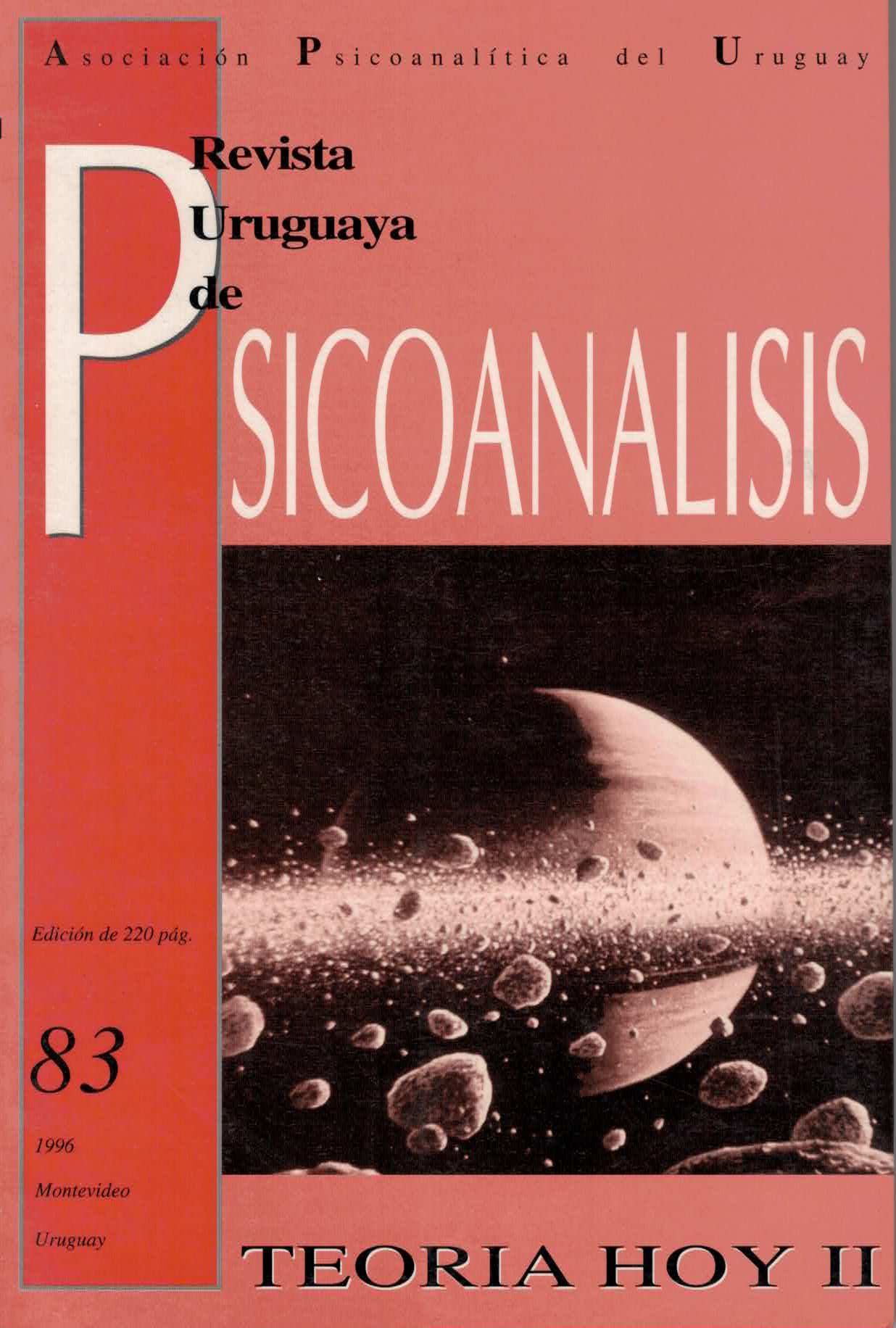The circuit of the impulse generator of the function 'subject'.
Keywords:
sujeto, objeto real, otro, yo, pulsión, destinos de la pulsión, voyeurismo, sadismo-masoquismo, actividad-pasividad, subjetivaciónAbstract
Note of interrogation about the notion of subject in Freud’s work, in relation to the destiny of the instinct in its two complementary moments once again over the private body and of an inversion to a passive satisfaction as goal. The inversion of the primary sadistic impulse happens through the search of a passive satisfaction on a “foreign person”, exterior agent that assumes the (sadistic) active
instinct function, while the self ego is satisfied in a masochistic-passive position. This moment of transformation to passive form of the active character of the instinct (to be watched, to be care, to be maltreated) will be fundamental in the truly subjectivity
process; the end of the sado-masochistic circle is the condition of the subjectivity process and the birth of the phantasmagoric appropriation. Corning back to Lacan’s theory about the accomplishment of the instinct circle and its
satisfaction, it is recommended that the first satisfaction should be to perceive one self, in the origin, delightful at the look of the mother. Introducing the notion of another, not only of symbolic Another of Lacan, but at the same time one real “another” –the fellow creature– that once completed the structure of the instinct on its inverted form, of return, affirms the effective mother function. The conjunction of symbolic Another and of the real father are in the place of exterior subject of the instinct.
The significant sign of this Another, extern agent subject takes value of structure, of identity for the subject born, conjugating the reality of the instinct with the symbolism of the interchange. It is possible to consider that in the course of the psychoanalytic treatment happens the subjective appropriation (by making oneself to listen, making oneself to interpret). This opens the capacity of felling it self as “ich subject”, further than the “ego”. The notions of the self ego as a narcissistic instance, integrate agent, domination of an imaginary unit based in the corporal model and the subject (of the inconcious) as an agent of the instinct activity. The conclusion shows the clinic interest in the proposed model of the instinct circle, with examples about grave pathologies in children and youth.
Downloads
References
CAHN R. “Du sujet”, rapport au 51ème Congrès de Langue Française, Paris, mai 1991 –in Revue Française de Psychanalyse, 6/1991.
PENOT B. “Passivation pulsionnelle, incomplétude et subjectivation”, in Revue Française de Psychanalyse, 1993, spécial congrès, p. 1663.
FREUD S. Oeuvres complètes, Paris, P.U.F. vol. XIII, p. 173.
GREEN A. “Passions et destins des passions”, in Nouvelle Revue de Psychanalyse, n° 21/ 1980 –repris dans La folie privée, Gallimard, p. 186.
LACAN J. Les quatre concepts fondamentaux de la psychanalyse, édit. du Seuil, 1973, p. 159, etc.
LAZNIK-PENOT M.C. “De la mise en place complète du bouclage pulsionnel”, in La clinique de l’autisme, édit. Point Hors ligne, Paris 1993, pp. 107 á 125.
LACAN J.: séminaire Le moi (1954-55), édit. du Seuil, p. 284.
ROSEMBERG B. Masochisme mortifère et masochisme gardien de la vie, monographie de la Revue Française de Psychanalyse, P.U.F. Paris, 1991.
DENIS P.: rapport au 52àme Congrès de L. F. –in Revue Française de Psychanalyse, 5/1992.



 This work is licensed under a
This work is licensed under a 